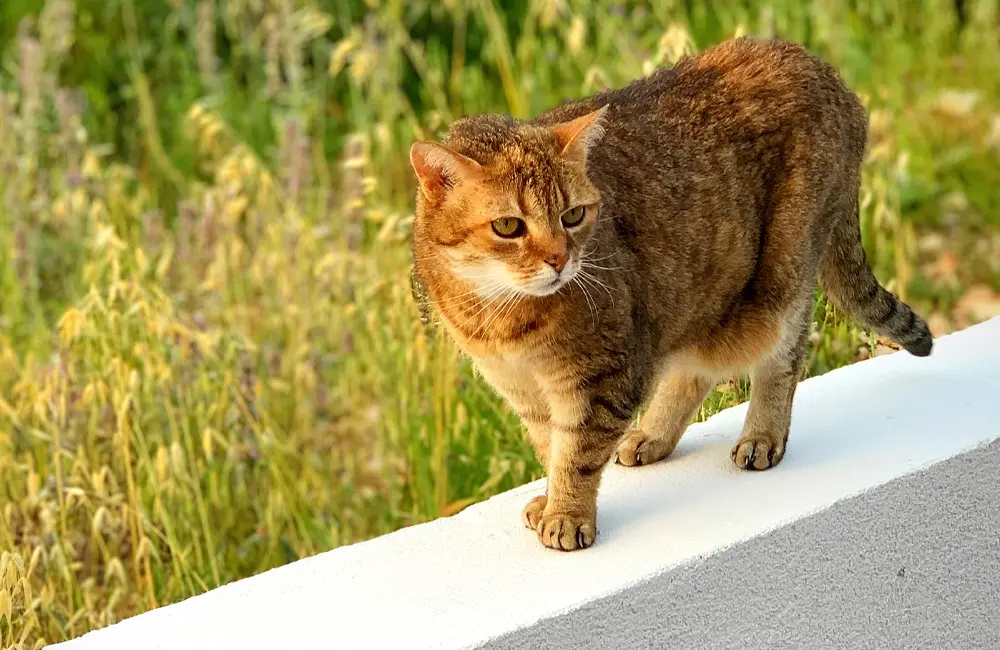
Moving House with a cat can be quite a challenge. Cats are notorious divas, they have their routine and God help anyone who would dare break that routine! Our cats are known to grow attached to their environments so when they are moved from the place that has become so familiar to them, they can and do become confused, disoriented and even distressed.
One of the biggest concerns for cat owners when they are moving home is that their beloved moggy will go walkabout and not return. Cats are known for going in search of their old homes after a house move. People will often hear from their old neighbours letting them know that their feline former neighbour has made an appearance there.
To avoid this happening, the expert team at Compare My Move offer up these clever tips:
Cat Space Before Moving Day
We recommend clearing out a room in your house around two or three weeks before moving day and allocating this space to the kitty. We suggest putting all of her comforts into just this room. Her food and water bowl, scratching posts, toys and bed. You don’t need to close your cat into this room, just make sure she knows where all of her things are and feed and water her in this space for the rest of your time in this house. On Moving day, you can close the cat in this room that she has become familiar with and she will be out of the way.
 Cat Space After Moving Day
Cat Space After Moving Day
Just as you had created a cat room in your old house, do the same in your new house. Place all of your cat’s things in there just as you did in the old house. She will need to be shut in this room, to begin with, while she adjusts to her new surroundings, the new smells and everything else that’s different. You can put something of yours into her new space, perhaps a blanket or an item of clothing that smells like you so that she still has that familiarity and comfort. It is advisable to keep your cat in this room with a litter tray for the first few days. She doesn’t need to be shut in at all times of course. Go fuss and play with her when you can and let her explore the rest of the house under your supervision ensuring all doors and windows are closed.
Artificial Pheromone Sprays and Plug-ins
To put your cat at ease in her new house, you can ask your vet about pheromone products. When cats feel safe and comfortable in their environments they rub their faces on various surfaces leaving behind pheromones. With an artificial pheromone product, you can apply these synthetic pheromones around the house to reassure your cat and help her familiarise herself with the new environment. Begin by using such products in the cat’s room and eventually, you can place them about the house as she begins to explore.
Staying In
Your cat may not be happy about this one, but, she needs to be kept indoors for AT LEAST 2 weeks after you have moved to your new house. It is important that she is able to bond with her new environment and familiarise herself with the smells and space so that she can always find her way back when she leaves.
The Garden
After at least two weeks, you can introduce the cat to her new garden. Go out with her and let her explore. Don’t leave her unsupervised in case she wonders off and be sure that you do this before meal time so that she can easily be enticed back into the house at the shake of a food box or the rustling of a foil packet. She loves that sound.
 Going Out
Going Out
Letting your cat go further from the garden or out unsupervised for the first time after you move will be a little nerve-wracking. It is important to let her out for the first time shortly before her meal time so that she will want to make her way back for food. This is when she is most likely to wander off but as you have already worked so hard at this point to acquaint her with her new home, she should find her way back just fine. Make sure she can get back into the house easily enough on her first few recces in case she is spooked by something like a neighbour’s dog or anything else she isn’t expecting. Leave a door or window open for her if you don’t have a cat flap.
Microchip
Be sure to get your cat microchipped or, if she is already microchipped then, it is wise to have her microchip details updated ahead of the move and certainly before she goes on her first solo outing in the new area. It is likely she will find her way back just fine but in the unfortunate event of her getting lost, the microchip will help return her to you.
We hope this has helped and put your mind at ease a little. One thing is for sure, Cats are intelligent and they can look after themselves. It’s important we help them through the transition but they are bright and tough little ones so they will be alright.
Good Luck!
Compare My Move are a Removal Company Comparison Site committed to helping home movers get the best possible deals on their removals costs, as well as all the advice and guidance they could possibly need when moving house.







